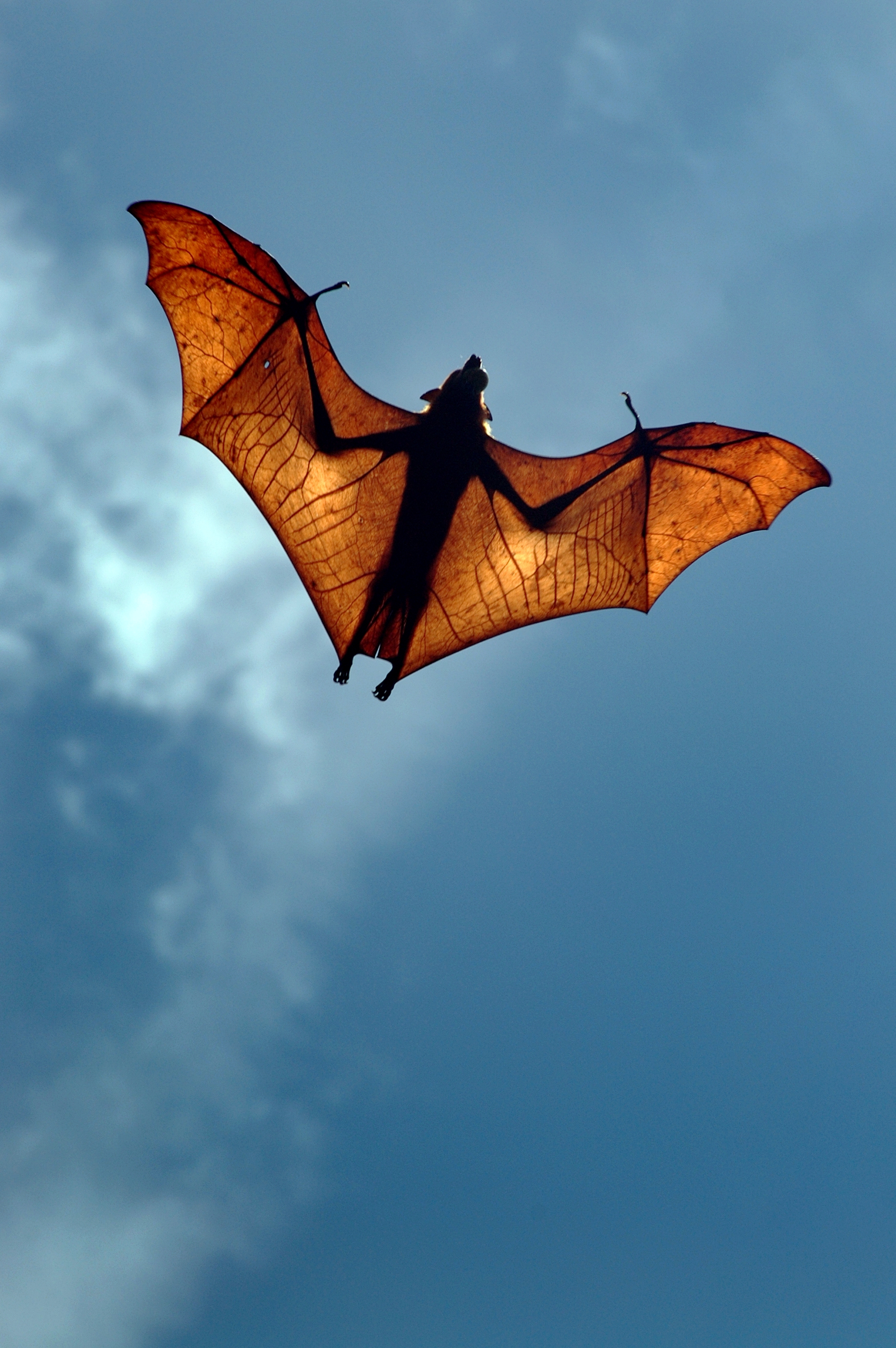| Citation |
Bates, P., Francis, C., Gumal, M., Bumrungsri, S., Walston, J., Heaney, L. & Mildenstein, T. 2008. Pteropus vampyrus. The IUCN Red List of Threatened Species 2008: e.T18766A8593657. https://dx.doi.org/10.2305/IUCN.UK.2008.RLTS.T18766A8593657.en. Downloaded on 06 May 2020. |
Description |
JUSTIFICATION
Listed as Near Threatened because this species is in significant decline (but at a rate of probably less than 30% over ten years or three generations) because it is being over-harvested for food over much of its range, and because of ongoing degradation of its primary forest habitat, making the species close to qualifying for Vulnerable under criterion A.
RANGE DESCRIPTION
This species generally ranges through much of continental and insular Southeast Asia. On the mainland, it has been reported from southern Myanmar, southern Viet Nam (possibly southern Cambodia), through much of Peninsular Malaysia to Singapore. The species is found over much of Indonesia, being recorded from the islands of Sumatra, Bangka, the Mentawi Islands (Sipura, North Pagai and South Pagai), the Krakatau Islands, Java, Bali, Lombok, Sumbawa, Sumba, Savu, the Anamba Islands, the Natuna Islands (Bunguran Besar) and Siantan. It is present on the island of Timor (East Timor and Indonesia), and on Borneo (Brunei, Indonesia and Malaysia). The species is present throughout the Philippines, except for the Batanes/Babuyan region. There are records from the Philippines islands of Bohol, Bongao, Boracay, Cabo, Catanduanes, Culion, Leyte, Guimaras, Luzon (Abra, Cagayan, Ilocos Norte, Isabela, La Union, Quezon [Paguntalan pers. comm. 2006], Tarlac provinces), Marinduque, Mindanao (Agusan del Norte, Bukidnon, Cotabato, Davao del Norte, Davao del Sur, Davao Oriental, Lanao del Norte, Lanao del Sur, Maguindanao, Misamis Occidental, Misamis Oriental, North Cotabato, South Cotabato, Zamboanga del Norte, and Zamboanga del Sur provinces and Bongo Island), Mindoro, Negros, Palawan, Panay, Polillo (Alviola 2000), Tantangan, Dinagat (Gunther 1879) and Romblon (Timm and Birney 1980). In the Philippines it has been recorded from sea level to around 1,250 m asl. Outside of Southeast Asia, there is a report from Shaanxi in China (Smith and Xie 2008), and the species has been reported to be present in the Andaman and Nicobar Islands. However, as there are no voucher based records of this species from the Andaman and Nicobar Islands, and its presence within India is doubtful and it is not mapped here (C. Srinivasulu and Sanjay Molur pers. comm. 9 September 2007).
DESCRIPTION
In the Philippines, this species formerly occurred in many large colonies, but these are now greatly reduced in size and number (Heideman and Heaney 1989; Mickleburgh et al. 1992; Mudar and Allen 1986; Rickart et al. 1993). The largest colony identified as this species found in Subic Bay (Luzon) contained almost 20,000 individuals (Paguntalan pers. comm. 2006). It is a moderately common species on Palawan Island in spite of continuing hunting pressure (Esselstyn et al. 2004). On Mindoro, it has been found in Sablayan municipality (Occidental Mindoro province) in mixed colonies of up to 52,000 individuals (Garcia pers. comm. 2006). In Thailand, the species has not been recorded from some localities for over 100 years. The largest colonies in Thailand now consist of 3,000 individuals (S. Bumgrunsri pers. comm. 2006). In Sabah (Malaysia) populations have probably undergone a serious decline (C. Francis pers. comm. 2006).
HABITAT AND ECOLOGY
This tree roosting species is tolerant to some habitat disturbance; it occurs in primary, and secondary forest and uses adjacent agricultural areas for feeding (Rabor 1955; Rabor 1986; Rickart et al. 1993; Sanborn 1953). A study of the species habitat in the Subic Bay area, Luzon, indicated that the species preferred natural forest to disturbed or agricultural areas (T. Mildenstein pers. comm. 2006).
THREATS
In the Philippines, while hunting for food has resulted in population declines in some areas, the species appears to be able to change roosting locations in order to avoid heavy hunting pressure (Garcia pers. comm. 2006). In Thailand, hunting is considered to be the major threat to this species (S. Bumgrunsri pers. comm. 2006), and it seems possible that hunting is also a major threat in other parts of the species range. In addition to overhunting, the species is generally threatened by the loss of lowland forest throughout much of its range, however, it somewhat adaptable to secondary or modified habitats, providing suitable roosting sites are available.
CONSERVATION ACTIONS
This species is listed on Appendix II of CITES. In view of the species wide range, it seems probable that it is present in many protected areas. There is a need to protect important roosting sites for this species, and to regulate any hunting pressure so that populations are sustainably harvested. Regular field surveys and monitoring of known populations should be undertaken. Further studies are needed to clarify the taxonomic status of populations currently allocated to this species, as Pteropus vampyrus might represent a species complex. |

